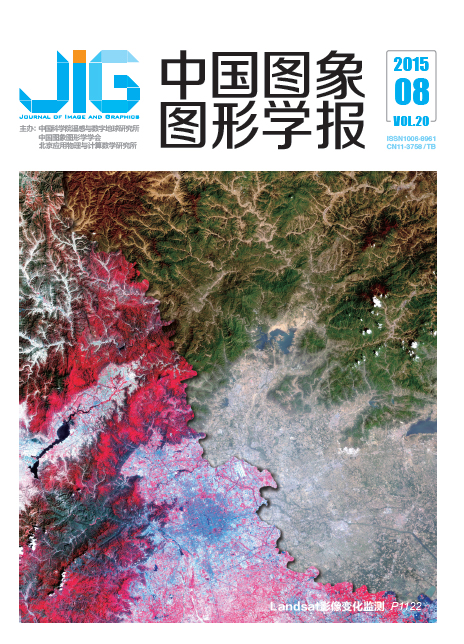
基于图像线特征和点云面特征的水下人造目标定位
摘 要
目的 针对水下人造目标的位姿参数估计问题,提出一种基于图像线特征与点云面特征的目标定位算法。方法 基于对人造物体成像后的边缘特征及其本身曲面特征的认知,将目标描述成为一种线特征与面特征的组合。首先依据指定线型对目标图像边缘进行线特征检测,初步定位目标在图像中的位置;然后采用RANSAC(random sample consensus)算法对投影到目标区域内的点云进行曲面特征检测,得到目标参数的近似值并从视场点云中提取目标点云;最后以超二次曲面作为目标的部件化模型,以检测到的目标参数为初值,建立3维目标尺寸和位姿估计的非线性目标函数,将该目标函数的优化结果作为3维目标的定位结果。结果 通过水下实验对算法的有效性进行验证,定位后的目标旋转轴角度偏差不超过2°,相对位置偏差不超过1%,单目标定位耗时不超过5 s。结论 实验结果表明,该算法的定位精度和耗时均能满足应用需要,可有效定位未知尺寸的人造目标,且对水下复杂环境有较强的适应性。
关键词
Underwater man-made object localization based on line feature of image and surface feature of point cloud
Xie Zexiao, Pan Chengcheng, Chi Shukai, Wei Zheng(Engineering College, Ocean University of China, Shandong, Qingdao 266100, China) Abstract
Objective Accurate visual guidance information is needed when unmanned underwater robots are implementing interactive tasks. Structured light measurement system is widely used in 3D reconstruction of an underwater target because its measuring accuracy is basically unaffected by light refraction and attenuation effects. However, the positioning of an underwater target becomes more difficult considering the underwater unstructured scenarios, the overlap and occlusion between a target and other underwater objects, and the single visual and scattered measurement data. For the problem of position estimation of an underwater man-made object, a 3D object localization algorithm is proposed based on the line feature of an image and the surface feature of a point cloud. Method Owing to the edge characteristics of the image and surface features of man-made objects, the proposed algorithm describes the object as a combination of line feature and surface feature, and the combination is provided for the localization algorithm as prior information. First, the whole field-of-view image is segmented into several regions of interest (ROIs) that contain different targets, and then the edges of the ROIs are detected. According to the specified line type in prior information, the feature lines are identified from the image edges of the ROIs. The position of the target in the whole field is confirmed with the region of potential target being selected on the basis of identification results. Second, the point cloud that was projected onto the object region is extracted based on the mapping relationship between the image and the point cloud of structured light measurement system. The random sample consensus algorithm is adopted to detect the surface feature from the extracted point cloud, which includes the points of the target, other partial objects, and noise in the field of view. Meanwhile, the parameters of the surface are approximated and the points of the target are extracted. Finally, taking superquadrics as the part-based model for the 3D object, a nonlinear objective function for the 3D object parameter estimation is established using the aforementioned initial approximations. Then, the objective function is minimized using target points, and the optimized parameters can be used as localization result. Result The reproducibility experiment indicates that the proposed algorithm for ellipse detection is robust; even semi-ellipses can be identified accurately. The validity of the proposed localization algorithm is verified through underwater experiments. For multi-targets whose symmetry axes are parallel to each other, the localization results show that the axis deviations are less than 2°. The relative position deviation of the two spheres, whose center distance is known, is no more than 1%. The time consumed for single-object localization in a complex underwater environment is no longer than 5 s. Conclusion Unlike other localization algorithms, the proposed algorithm needs to neither segment the point cloud from the target scene nor target offline modeling. Autonomous positioning can be achieved by simply providing the line feature in target imaging edges and the contained surface feature. To verify the validity of the proposed algorithm, some practical experiments are performed. Experimental results show that the proposed algorithm can obtain accurate localization results, is fast and effective for a man-made object of unknown size, and has good applicability to complex underwater environments.
Keywords
|



 中国图象图形学报 │ 京ICP备05080539号-4 │ 本系统由
中国图象图形学报 │ 京ICP备05080539号-4 │ 本系统由